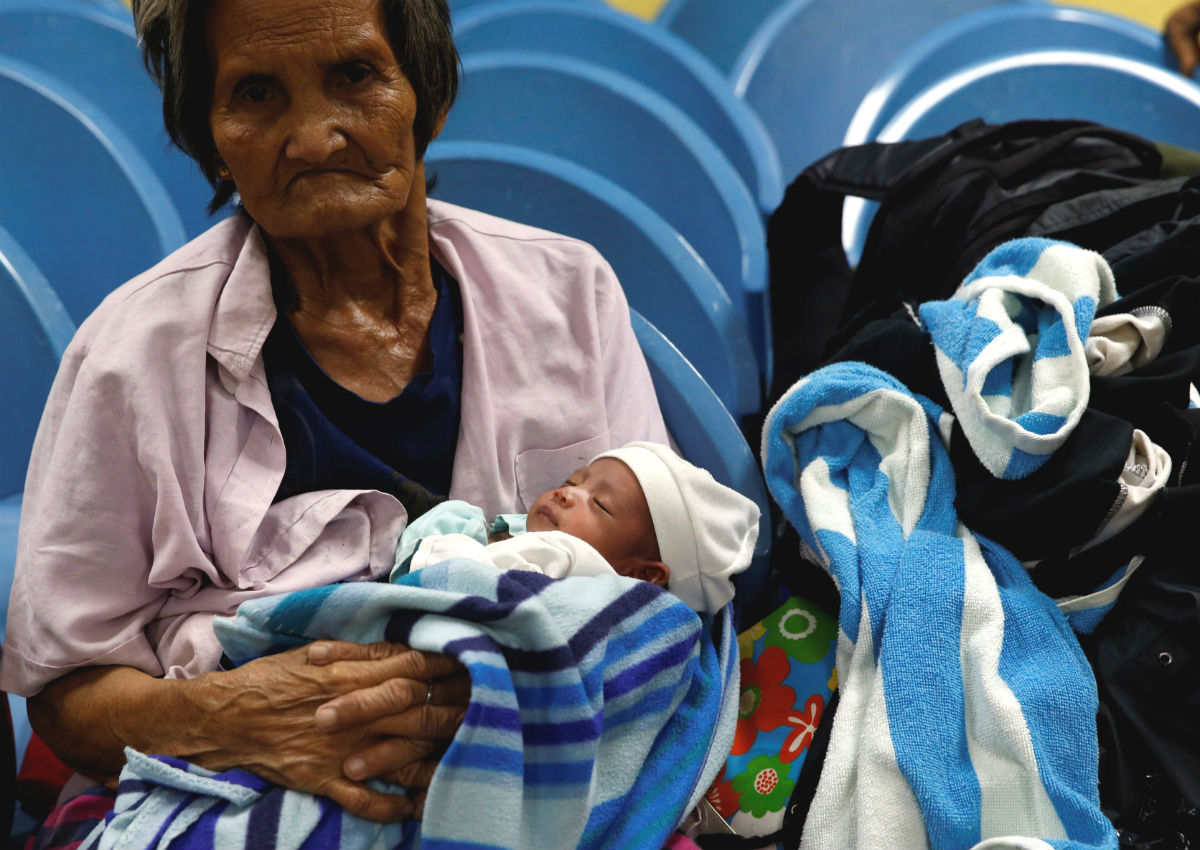Hungry Philippine typhoon survivors huddled in makeshift shelters and waited for aid on Friday, after losing nearly everything from one of the most powerful storms to hit the Southeast Asian archipelago.
Super Typhoon Haima struck late on Wednesday night with winds similar to those of catastrophic Haiyan in 2013, which was then the strongest storm to hit the disaster-prone country and claimed more than 7,350 lives.
At least eight people were killed and another was missing while tens of thousands lost their homes as Haima devastated farming and mountain communities across the north of the Philippines’ main island of Luzon on Thursday.
“I cried when I saw my beans and squash plants that had been raked off by the winds. My mango trees were also toppled,” farmer Leonardo Longan, 66, told AFP in the town of Penablanca, close to where Haima made landfall.
Like many of his neighbours, Longan and his wife now live in an improvised shelter with palm leaves for a roof, blankets for walls and a bed made from the collapsed wooden wall of his old dwelling.
They sent their four school-age children to live with a relative, and borrowed rice from a local trader.
A military plane-load of food aid was flown to the region on Friday to augment supplies positioned there ahead of the disaster, Romina Marasigan, spokeswoman for the National Disaster Risk Reduction and Management Council told reporters in Manila.
But in Penablanca, a farming town of about 42,000 people, Longan said aid had yet to arrive.
In San Pablo, another Cagayan Valley town about 20 kilometres south of Penablanca, four families spent Thursday night on a roadside after Haima flattened their homes.
“No one has helped us. It is just us and other families, helping each other on the side of the road,” Jovy Dalupan, a mother of two, told AFP.
Dalupan said her daughters, aged eight months and four years, had started coughing after being drenched during the storm and that their clothes were still wet.
“But we have nothing to change into,” she said.
A preliminary report from the northern Cordillera region listed eight people killed by landslides and a man missing after being swept away on a swollen river.
More than 50,000 people in typhoon-affected areas in the north had received aid, although the total number of people who needed help was not known.
Communication lines have yet to be restored in about half of the Cordilleras and so the extent of the typhoon’s fallout there could not yet be determined, said Marasigan, the disaster council spokeswoman said.
Dozens of farming villages in Bataan and Pampanga provinces to the south near Manila remained under water on Friday, as water flowed down from the northern mountains, regional officials said, with nearly 40,000 residents seeking refuge on higher ground.
The Philippine islands are often the first major landmass to be hit by storms that generate over the Pacific Ocean. The Southeast Asian archipelago endures about 20 major storms each year, many of them deadly.
The most powerful and deadliest was Haiyan, which destroyed entire towns in heavily populated areas of the central Philippines in November 2013.
Haima was the second typhoon to hit the northern Philippines in a week, after Sarika struck on Sunday claiming at least one life and leaving three people missing.
Haima hit Hong Kong and the southern Chinese mainland on Friday, after weakening into a typhoon with wind speeds of 145 kilometres an hour.
More than 700 flights in and out of Hong Kong were cancelled or delayed as the city’s usually frenetic streets were deserted with schools closed and other precautions put in place under a Number 8 storm signal, the third-highest warning level.




























































